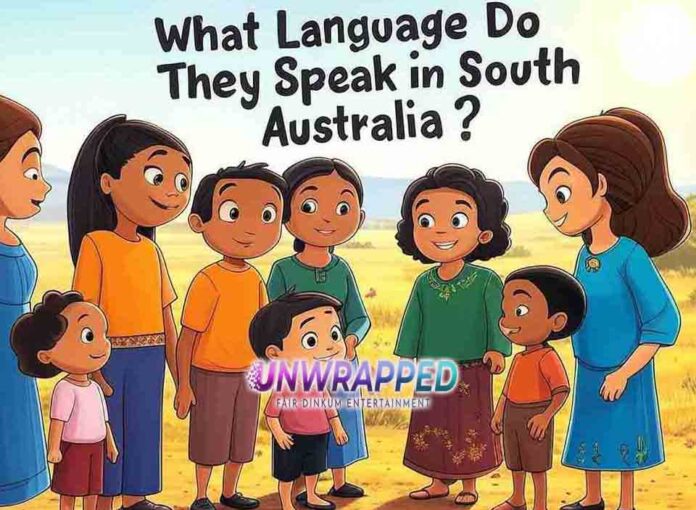When exploring the fascinating cultural tapestry of South Australia, one common question arises: What language do they speak there? While English might be the obvious answer, South Australia’s linguistic identity is enriched by the presence of diverse languages, shaped by Indigenous heritage, immigrant communities, and evolving global influences.
The Primary Language: English
English is the official language of South Australia and is spoken by the vast majority of its population. As part of Australia, South Australia adheres to national norms where English dominates everyday communication, education, business, and government affairs. Australian English, however, has its own unique quirks, with local slang and pronunciations that can take newcomers by surprise. For instance, you might hear phrases like “arvo” (afternoon) or “no worries,” reflecting the casual and friendly nature of Australian culture.
Indigenous Languages: A Window into South Australia’s Roots
Before European colonization, South Australia was home to many Indigenous peoples, each with their own languages. Kaurna, the language of the Kaurna people, is native to the Adelaide Plains region, including what is now Adelaide, the capital of South Australia. Efforts to revive Kaurna have gained momentum, with schools and communities incorporating it into cultural and educational initiatives.
Other Indigenous languages include Ngarrindjeri, spoken by the Ngarrindjeri people of the Murray River region, and Adnyamathanha, associated with the Flinders Ranges area. These languages not only offer a glimpse into the history of South Australia but also carry profound spiritual and ecological knowledge.
The Influence of Immigration on South Australia’s Linguistic Landscape
South Australia’s history of immigration has significantly shaped its multilingual character. Unlike other Australian states that experienced a gold rush-fueled influx of settlers, South Australia was established as a free colony, attracting diverse migrant groups seeking opportunities.
- German: In the 19th century, German immigrants fleeing religious persecution settled in areas like the Barossa Valley. Today, traces of their influence are evident in local place names, cuisine, and even language. Some families continue to speak German or a regional dialect, though this is becoming less common.
- Italian and Greek: Post-World War II saw a wave of migrants from Italy and Greece, contributing to South Australia’s vibrant multicultural scene. Italian and Greek communities are prominent in Adelaide, where languages like Italian and Greek are still spoken within families and community groups.
- Vietnamese, Mandarin, and Other Asian Languages: More recently, immigration from Asia has brought languages like Vietnamese, Cantonese, and Mandarin into South Australia. These languages are particularly prevalent in urban areas such as Adelaide.
Languages Spoken Today: A Multilingual Snapshot
According to the latest Australian Census data, while English is spoken by the majority, over 20% of South Australians speak a language other than English at home. The top languages include:
- Italian
- Mandarin
- Greek
- Vietnamese
- German
This multilingualism highlights South Australia’s rich cultural diversity and the global connections its residents maintain.
Language in Education and Cultural Programs
South Australia places a strong emphasis on language learning and cultural preservation. Many schools offer Language Other Than English (LOTE) programs, teaching languages such as Japanese, French, and Mandarin. Additionally, community-led initiatives play a vital role in preserving and teaching Indigenous languages, with organizations like Kaurna Warra Pintyanthi leading the charge in reviving the Kaurna language.
The Role of Language in South Australian Culture
Language in South Australia goes beyond communication—it’s a vital element of cultural expression. Festivals, food, and art often reflect the linguistic heritage of its communities. For example:
- The Adelaide Fringe Festival frequently features multilingual performances, celebrating both local and international cultures.
- Restaurants in areas like Adelaide Central Market showcase menus in Italian, Greek, and Asian languages, reflecting the culinary diversity of the region.
- Indigenous art often incorporates words and themes from native languages, connecting viewers to the land and its history.
Fun Facts About Language in South Australia
- Place Names: Many South Australian towns and landmarks have names derived from Indigenous languages, such as “Onkaparinga” (women’s river) and “Naracoorte” (place of running water).
- Barossa Valley German Dialect: Known as “Barossa Deutsch,” this unique German dialect developed in South Australia but is now considered endangered.
- Language Revival Projects: South Australia is at the forefront of Indigenous language revival, with schools incorporating native languages into curriculums and public signage.
How to Immerse Yourself in South Australia’s Linguistic Diversity
- Visit Multicultural Festivals: Events like the OzAsia Festival celebrate the linguistic and cultural diversity of the region.
- Learn a New Language: Engage with local language classes, whether it’s Kaurna, Italian, or Mandarin, to deepen your connection to South Australia.
- Support Indigenous Language Initiatives: Contribute to or participate in programs that promote the learning and preservation of Indigenous languages.
Conclusion
So, what language do they speak in South Australia? While English is the dominant language, the region’s linguistic identity is a vibrant mix of Indigenous heritage, European influence, and Asian migration. From the Kaurna language of the Adelaide Plains to the Italian spoken in local communities, South Australia’s languages tell a story of history, resilience, and cultural exchange.
Whether you’re a visitor or a resident, exploring South Australia’s linguistic diversity offers a deeper appreciation for its rich cultural fabric. Start by learning a few phrases in Kaurna or enjoying a multicultural festival—there’s no better way to connect with the heart of South Australia.
See Also: Is Tasmania More Like New Zealand?










